After five visits to Japan, it is safe to say that it is my favorite destination to visit. Here is the perfect two week itinerary for Japan. With this itinerary you will hit up Tokyo, Kyoto, and Osaka as well as optional day trips to Nara, Kobe, and Nikko. This Japan itinerary is highly customizable and easy to move days or activities around. I’ve even included recommendations for restaurants, hotels, and guided tours as well as 20 tips for your trip to Japan. Here is the perfect two week itinerary for you first trip to Japan, including estimated costs for each day.
Day 1: Arrival in Tokyo
– Check into your hotel and rest after your flight. I recommend staying in either the Shinjuku or Asakusa parts of Tokyo for your first visit.
– Explore the vibrant neighborhoods of Shibuya and Harajuku, known for their trendy fashion, shopping, and street food.
– Check out the Shibuya crossing from the second floor of Starbucks for the best free view.
– Make your way to Shibuya Sky for sunset. Be sure to get tickets in advance.
– Estimated costs: Accommodation – $100-$200 per night (depending on the hotel), Food – $20-$40 per day (depending on your preferences), Transportation – $5-$10 per day (using the Tokyo Metro).
Day 2: Tokyo
– Visit the historic Asakusa district and explore Senso-ji Temple and Nakamise Shopping Street. Stop in at Tokyo Kimono Shoes to purchase a one-of-a-kind souvenir of sneakers made from kimono fabric.
– Head to the top of Tokyo Skytree to see incredible views of the city. On a clear day you might even catch a glimpse of Mt. Fuji.
– Visit the basement of the department store, Isetan to see the incredible food hall.
– Have dinner at an izakaya (Japanese pub) in the lively Shinjuku area.
– Take a stroll through Shinjuku’s vibrant nightlife area to experience the neon lights, Godzilla head which roars and has a light show every hour on the hour from 12pm-8pm, and the 3D cat billboard.
– Estimated costs: Sightseeing – $20-$70 (museums, attractions), Food – $20-$40 per day, Transportation – $5-$10.
Day 3: Tokyo
– Visit the Tsukiji Fish Market and try fresh sushi for breakfast or lunch.
– Spend the late morning/afternoon in the upscale neighborhood of Ginza, known for its luxury shopping and department stores.
– Explore the peaceful gardens of the Imperial Palace.
– In the evening, head to the trendy district of Roppongi for dinner and nightlife.
– Visit the iconic Tokyo Tower.
– Estimated costs: Food – $20-$40, Transportation – $5-$10.
Day 4: Tokyo to Kyoto
– Travel to Kyoto by bullet train (2.5 hours). Make sure to request a window seat on the “Fuji side” of the train.
– Visit the iconic Fushimi Inari Taisha Shrine, known for its thousands of vibrant red torii gates. Consider renting a kimono for your visit.
– Explore the historic Higashiyama District and visit Kiyomizu-dera Temple.
– Estimated costs: Bullet train – $130-$150 (one way), Food – $20-$40, Transportation – $5-$10.
Day 5: Kyoto
– Visit Arashiyama to see the famous Bamboo Grove and the stunning Tenryu-ji Temple. Get there at sunrise to enjoy the grove with hardly any tourists.
– Head back to Kyoto for a food tour of Nishiki Market.
– Visit the Kinkaku-ji Temple (Golden Pavilion) and the Ryoan-ji Temple (rock garden).
– Explore the traditional Gion district and try to spot geiko and maiko (geisha and apprentice geisha in the Kyoto dialect) on their way to evening appointments.
– Book a once-in-a-lifetime Maiko Dinner experience.
– Estimated costs: Sightseeing – $20-$40, Food – $20-$40, Transportation – $5-$10, Maiko Dinner – $400.
Day 6: Day Trip to Nara
– Take a day trip to Nara, a city known for its ancient temples and friendly deer.
– Visit Todai-ji Temple, which houses the Great Buddha statue.
– Explore the beautiful Nara Park and feed the deer.
– Visit Nakatanidou to see mochi being made the traditional way.
– Check out my guide for a day trip to Nara.
– Estimated costs: Train to Nara – $10-$20 (round trip), Sightseeing – $20-$40, Food – $20-$40, Transportation – $5-$10.
Day 7: Kyoto to Osaka
– Travel to Osaka by train (30 minutes).
– Visit Osaka Castle and explore its surrounding park. You can also go inside the castle but I found it to be underwhelming.
– Experience the vibrant atmosphere of Dotonbori, known for its street food and neon signs.
– Estimated costs: Train to Osaka – $10-$20, Sightseeing – $20-$40, Food – $20-$40, Transportation – $5-$10.
Day 8: Osaka
– Explore the historic district of Shinsekai and try local street food like takoyaki and kushikatsu. I also recommend visiting Tower Knives while you are here to pick up an authentic Japanese knife to take home as a souvenir.
– Visit the Osaka Aquarium Kaiyukan, one of the largest aquariums in the world.
– Enjoy shopping and entertainment in the Umeda district.
– Estimated costs: Sightseeing – $20-$40, Food – $20-$40, Transportation – $5-$10.
Day 9: Day Trip to Kobe
– Take a day trip to Kobe by train (30 minutes).
– Visit the stunning Kobe Harborland and enjoy the scenic views.
– Try Kobe beef at a local restaurant for lunch. I highly recommend Tor Road Steak Aoyama. Be sure to make reservations well in advance. You can reach out to them over Facebook messenger.
– Explore the Kitano-cho district, known for its European-style houses.
– Visit Kobe’s Chinatown which has over a hundred Chinese restaurants, shops, and a Chinese temple dedicated to Lord Guan.
– Estimated costs: Train to Kobe – $10-$20, Sightseeing – $20-$40, Food – $30-$100, Transportation – $5-$10.
Day 10: Osaka
– Visit the Shitenno-ji Temple, one of the oldest Buddhist temples in Japan.
– Explore the trendy district of America-mura (American Village) and shop for fashion and souvenirs.
– Visit Shinsaibashi-Suji Shopping Street for high-end second-hand shops that are tax free.
– Estimated costs: Sightseeing – $20-$40, Food – $20-$40, Transportation – $5-$10.
Day 11: Osaka to Tokyo
– Travel back to Tokyo by bullet train (2.5 hours).
– Use the afternoon to revisit any favorite spots in Tokyo or explore new areas.
– Estimated costs: Bullet train – $130-$150, Food – $20-$40, Transportation – $5-$10.
Day 12-14: Tokyo
– Use the remaining days in Tokyo to explore any missed attractions or areas of interest.
– Consider visiting places like the Meiji Shrine, the trendy neighborhood of Shimokitazawa, or the peaceful gardens of the Rikugien or Koishikawa Korakuen or Shinjuku Gyoen National Garden.
– Take a stroll through the historic district of Yanaka and experience the nostalgic atmosphere.
– Visit the teamLab Borderless (opening in 2023) or teamLab Planets (closing at the end of 2023) digital art exhibitions for an immersive and interactive experience.
– Visit Tokyo Disneyland or Tokyo DisneySea.
– Consider a day trip to Nikko. Check out my guide to visiting Nikko for the day.
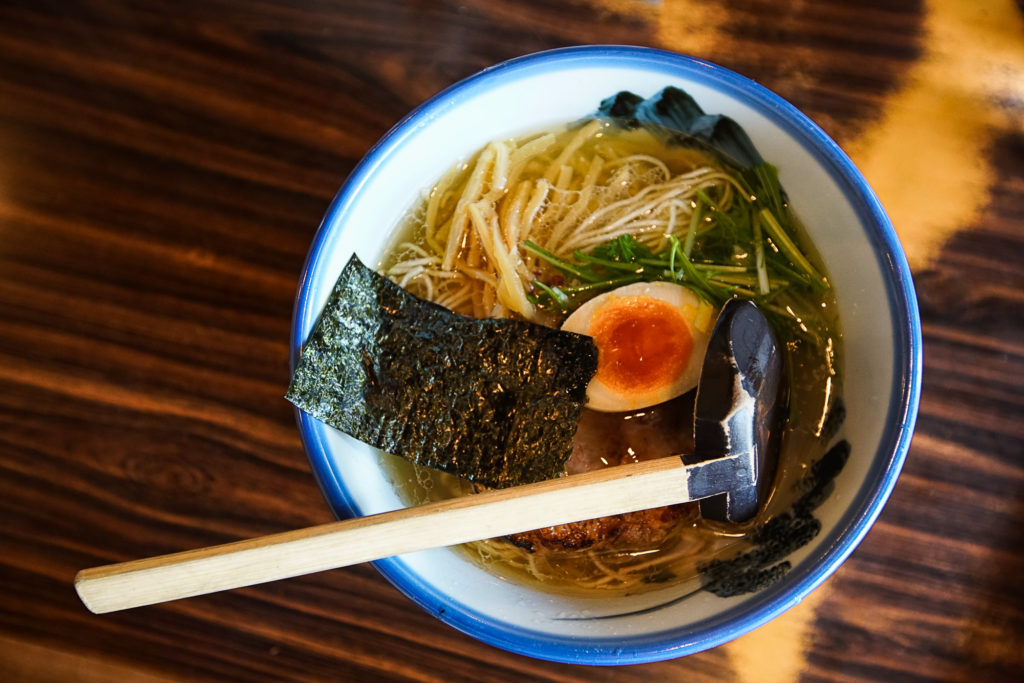
Restaurant recommendations
– Tokyo: Maguroya Kurogin (Tsukiji Fish Market), Gonpachi (inspiration for the Kill Bill restaurant scene), Ichiran Ramen (for a unique ramen experience).
– Kyoto: Gogyo Ramen (specializing in burnt miso ramen), Katsukura (for delicious tonkatsu), Nishiki Market (food stalls and local delicacies).
– Osaka: Dotonbori Street (try various street foods), Chibo Okonomiyaki (for Osaka-style okonomiyaki), Kuromon Ichiba Market (seafood market with many food options).
– Kobe: Wakkoqu (for high-quality Kobe beef), Tor Road Steak Aoyama (affordable Kobe beef).
Hotel Recommendations in Each City
Tokyo
Park Hyatt Tokyo: Located in the vibrant Shinjuku area, this luxury hotel offers stunning views of the city skyline and impeccable service.
Andaz Tokyo Toranomon Hills: Situated in the upscale Toranomon Hills tower, this stylish hotel features modern rooms with panoramic views and a rooftop bar.
Hotel Ryumeikan Tokyo: A boutique hotel conveniently located near Tokyo Station, offering comfortable rooms and easy access to major attractions.
Citadines Shinjuku Tokyo: A budget-friendly option in the heart of Shinjuku, providing apartment-style accommodations with kitchenettes.
Capsule Hotel Asakusa Riverside: Located in the Asakusa area, this capsule hotel offers compact sleeping capsules and shared facilities at an affordable price.
Nui. Hostel & Bar Lounge: A trendy and stylish hostel in the Asakusa district, offering dormitory-style rooms and a communal lounge area.
Sakura Hotel Ikebukuro: Situated near Ikebukuro Station, this budget-friendly hotel offers a variety of room types, including private and dormitory-style options.
Khaosan Tokyo Origami: A budget-friendly hostel in the Asakusa area, providing private and dormitory rooms with a friendly atmosphere.
Shinjuku Washington Hotel: Connected to Shinjuku Station, Shinjuku Washington Hotel is a 5-minute walk from the fashionable shopping and dining district of Shinjuku. Has a women-only floor.
Hotel Sunroute Plaza Shinjuku: Conveniently located business-style budget hotel.
Henn na Hotel Tokyo Ginza: Quirky hotel that is run by robots. Very comfortable and well located. Has a fun assortment of items that you can borrow during your stay like massagers and VR headsets.
APA Hotel Asakusa Kaminarimon Minami: I adore the APA hotels. They are business-style budget hotels that are located all over Japan. They have everything you need for a comfortable stay without breaking the bank. This one and the one mentioned below are in a perfect location for Asakusa.
APA Hotel Asakusa Kaminarimon: Located just down the street from the hotel mentioned above. They are almost identical so be sure to check out both for availability if you want to stay in Asakusa.
Akihabara Bay Hotel (Female Only): This is a women’s only capsule hotel in Akihabara. I recommend upgrading to the capsule with a tv. Read my full review of this property.
Kyoto
The Ritz-Carlton Kyoto: Set along the picturesque Kamogawa River, this luxurious hotel combines traditional Japanese design with modern comforts.
Hyatt Regency Kyoto: Located near Kyoto Station and in the beautiful Higashiyama district, this elegant hotel offers spacious rooms and easy access to transportation.
Hotel Kanra Kyoto: A boutique hotel with a blend of modern and traditional elements, featuring comfortable rooms and a tranquil atmosphere.
Piece Hostel Sanjo: A budget-friendly hostel offering dormitory-style and private rooms, located in a central area of Kyoto.
Nine Hours Kyoto: A capsule hotel located near Kawaramachi Station, offering sleek sleeping capsules and shared bathing facilities.
Guest House Higashiyama: A traditional Japanese-style guesthouse in the Higashiyama area, featuring tatami rooms and communal spaces.
Hostel Mundo Chiquito: A cozy hostel located near Nijo Castle, providing dormitory-style rooms and a communal kitchen.
Laon Inn Gion Nawate: No frills budget hotel in a fantastic location between Higashiyama and Gion.
Hotel Gracery Kyoto Sanjo: Beautiful hotel tucked in between two major shopping streets and just around the corner from Nishiki Market.
Dormy Inn Premium Kyoto Ekimae: Fantastic hotel located near Kyoto Station. Really great breakfast and fun amenities like a late night noodle bar and sauna.
Osaka
InterContinental Osaka: A luxurious hotel situated in the Grand Front Osaka complex, offering spacious rooms and panoramic city views.
Swissotel Nankai Osaka: Located in the heart of Namba, this upscale hotel provides comfortable rooms and easy access to shopping and dining.
Hotel Monterey Grasmere Osaka: A stylish hotel near Universal Studios Japan, featuring European-inspired decor and cozy rooms.
Hotel Chuo Oasis: A budget-friendly hotel with clean and simple accommodations, conveniently located near Osaka Station.
First Cabin Midousuji Namba: A airplane themed capsule hotel in the Namba area, offering compact cabins and shared bathing facilities. There are room options available that are larger than the traditional capsule hotel. This chain also operates in multiple cities in Japan.
J-Hoppers Osaka Universal: A budget-friendly hostel near Universal Studios Japan, providing dormitory-style rooms and a communal kitchen.
Guesthouse U-En: A traditional Japanese-style guesthouse in the Tennoji area, featuring tatami rooms and a tranquil garden.
The Royal Park Hotel Iconic Osaka-Midosuji: Beautiful five-star hotel located in the business district of Osaka.
Dormy Inn Osaka Tanimachi: Located just a few blocks away from Osaka Castle. Has a hot spring public bath (onsen).
Hotel Gracery Osaka Namba: Conveniently located near Namba station for easy access to the Osaka airport and just a few blocks from the vibrant Dotonbori street.
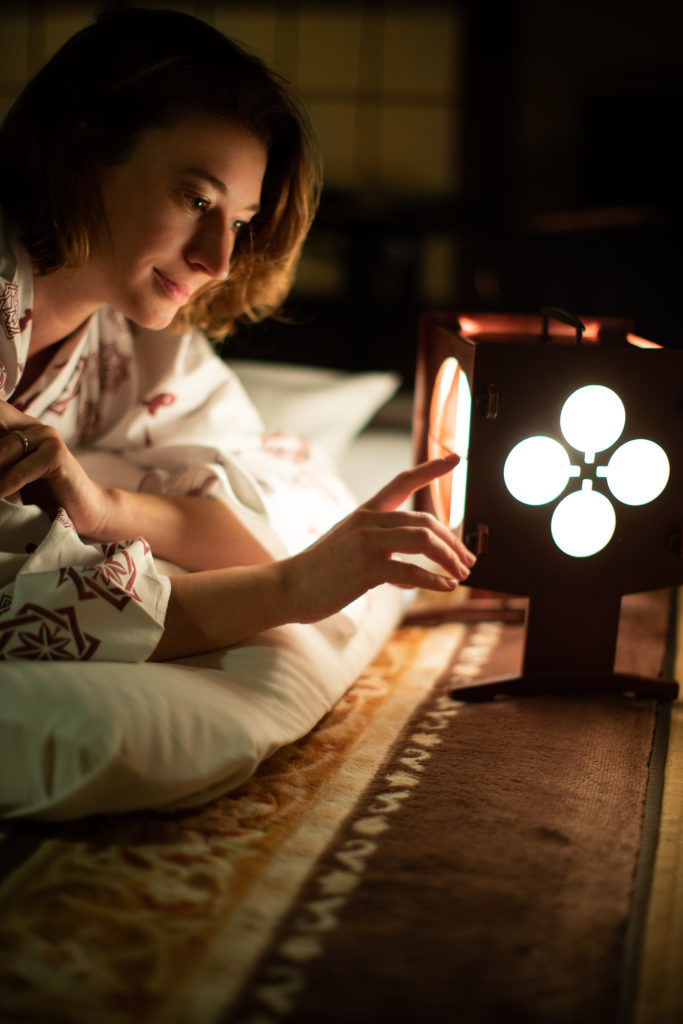
Ryokans (Traditional Inns) Recommendations in Each City
Ryokans typically offer a more traditional and immersive experience but can vary in price. I recommend spending one night in a Ryokan during your visit to Japan. They typically provide dinner and breakfast.
Tokyo
Hoshinoya Tokyo: Located in the heart of Tokyo, Hoshinoya Tokyo offers a luxurious ryokan experience with beautifully designed rooms, traditional Japanese cuisine, and tranquil views of the city skyline.
Sadachiyo: Nestled in the historic district of Asakusa, Sadachiyo provides a charming and authentic ryokan experience. The rooms are adorned with traditional Japanese aesthetics, and guests can enjoy relaxing in the communal baths and experiencing a kaiseki-style dinner.
Kyoto
Hiiragiya Ryokan: With a history dating back over a hundred years, Hiiragiya Ryokan is a renowned ryokan in Kyoto. It boasts elegantly designed rooms, a serene garden, and exquisite traditional kaiseki meals that showcase the essence of Kyoto’s culinary heritage.
Tawaraya: Tawaraya is a prestigious ryokan that has been hosting guests since the 18th century. It offers spacious and beautifully appointed rooms, exceptional service, and the opportunity to experience the refined traditions of Kyoto.
Momijiya Bekkan Kawa No Iori Ryokan: Beautiful ryokan located just outside the city of Kyoto. Perfect location to get away into nature and enjoy fall foliage. Some of the rooms have their own onsen facing a peaceful garden.
Osaka
Arima Onsen Taketoritei Maruyama: Located in the neighboring city of Kobe, but easily accessible from Osaka, this ryokan is situated in the famous Arima Onsen area. Guests can indulge in hot spring baths, enjoy Japanese-style rooms, and savor delicious kaiseki meals.
Yamatoya Honten Ryokan: A historic ryokan in the heart of Osaka, offering affordable tatami rooms and communal baths.
These are just a few examples, and there are many more accommodations available throughout Japan. It’s recommended to check reviews, availability, and specific details before making a booking.
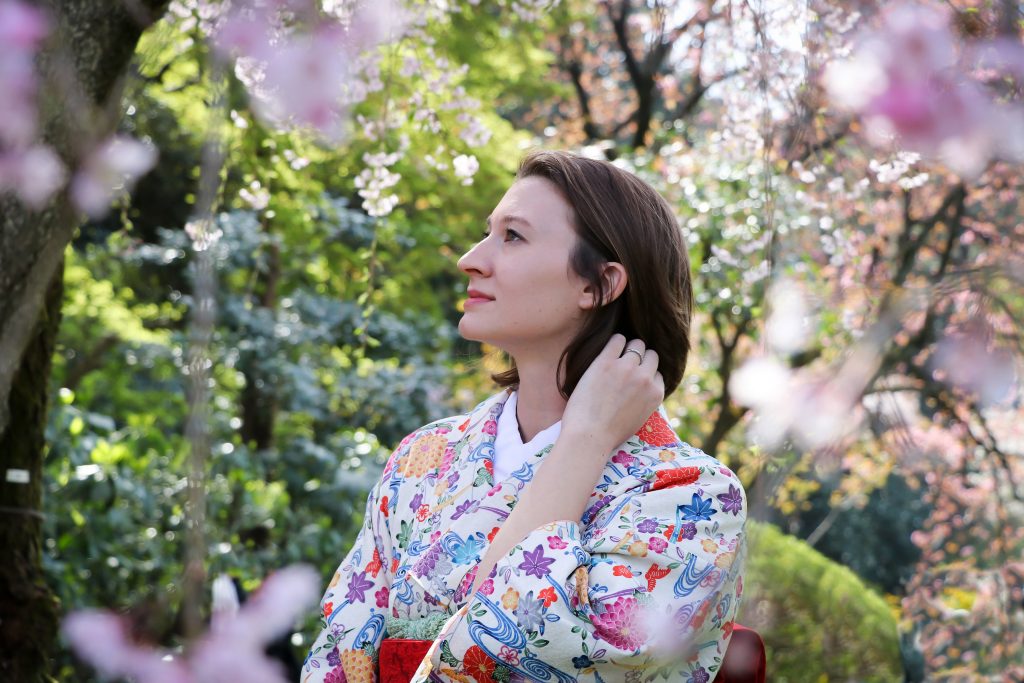
Recommended Guided Tours and Experiences
Tokyo
Tokyo City Highlights Tour: A full-day guided tour that covers major attractions in Tokyo, including the Meiji Shrine, Asakusa Temple, and Tokyo Tower.
Tsukiji Fish Market and Sushi Workshop: Experience the bustling Tsukiji Fish Market and learn to make sushi in a hands-on workshop with a local chef.
Free Shinjuku Night Walking Tour: experience the craziest part of Tokyo nightlife and the Japanese drinking culture – see the Red Light District and more.
Kimono Photoshoot: Be dressed in a traditional kimono or yukata by a professional kimono dresser and have your photo taken by a pro fashion photographer. One of the best experiences you can have in Tokyo!
Kyoto
Kyoto Temples and Shrines Tour: Explore Kyoto’s iconic temples and shrines, such as Kinkaku-ji (Golden Pavilion), Fushimi Inari Taisha, and Kiyomizu-dera.
Arashiyama Bamboo Grove and Rickshaw Tour: Visit the enchanting Arashiyama Bamboo Grove and enjoy a rickshaw tour through Arashiyama.
Kyoto Gion Walking Tour: Discover the historic Gion district, known for its geisha culture, traditional wooden machiya houses, and charming streets.
Kimono Rental for a Day: Stroll through Kyoto while wearing a traditional Japanese kimono. This is an authentic cultural experience that will leave you with many beautiful photos and memories.
Osaka
Osaka Food and Nightlife Tour: Dive into Osaka’s vibrant food scene and explore local food markets, street food stalls, and hidden izakayas with a knowledgeable guide.
Osaka Castle and Dotonbori Walking Tour: Visit Osaka Castle and stroll through the lively streets of Dotonbori, experiencing the city’s history, culture, and delicious street food.
Osaka Cycling Tour: Explore the city on a guided cycling tour, discovering landmarks like Tsutenkaku Tower, Shinsekai district, and Osaka Bay Area.
Kobe
Kobe Walking Tour with a Local Guide: Join a local guide to explore the charming streets of Kobe, visit historical sites, and learn about the city’s history and culture.
Nara
Nara Park and Todai-ji Temple Tour: Explore Nara Park, home to hundreds of friendly deer, and visit Todai-ji Temple, which houses the famous Great Buddha statue.
Todai-ji Temple and Ikaruga Cycling Tour: Take a cycling tour through the picturesque countryside of Nara, visiting Todai-ji Temple, a UNESCO World Heritage site.
Nara Walking Tour: Discover the historical streets and landmarks of Nara, including Kofuku-ji Temple, Naramachi district, and the traditional Naramachi Museum.
Nara Craft Beer, Sake, and Food Walking Tour: Discover the exciting culture of Nara on this guided walking tour. Experience a mochi pounding session, authentic Nara sushi, a sake distillery, and much more.
It’s important to check the availability, duration, and specific details of each tour before booking. Additionally, consider reading reviews and comparing prices to find the best option that suits your interests and preferences.
20 Tips for visiting Japan:
1. Learn a few basic Japanese phrases and greetings to show respect.
2. Familiarize yourself with Japanese customs, such as bowing and removing shoes in certain places.
3. Carry cash as many places still prefer cash over cards.
4. Get a Suica or Pasmo card for convenient use on trains and buses.
5. Respect the local culture and follow etiquette, such as not talking loudly on public transportation.
6. Take advantage of the excellent public transportation system for getting around.
7. Try local cuisine and explore different types of restaurants, including izakayas and ramen shops.
8. Consider purchasing a Japan Rail Pass if you plan to do a lot of intercity travel by train.
9. Respect the local customs and traditions, such as taking off your shoes before entering someone’s home or certain establishments.
10. Be mindful of your noise level in public spaces, as Japanese culture values peace and quiet.
11. Carry a portable Wi-Fi device or obtain a local eSIM card to stay connected and navigate easily.
12. Take advantage of the convenience stores (konbini) for quick and affordable meals, snacks, and other necessities.
13. Try to experience an onsen (hot spring) for relaxation and cultural immersion, ensuring to follow the proper etiquette.
14. Visit a local market like Tsukiji Fish Market or Kuromon Ichiba Market to explore the variety of fresh seafood and local produce.
15. Check the weather forecast and pack accordingly, considering Japan’s diverse climate throughout the year.
16. Keep a photocopy or photo of your passport and important documents in case of loss or theft.
17. Respect designated smoking areas and be aware that smoking is prohibited in many public spaces.
18. Familiarize yourself with the train and subway systems in each city to navigate efficiently. Use Google Maps public transportation mode to navigate like a local.
19. Stay hydrated and carry a reusable water bottle, as tap water is safe to drink in Japan.
20. Take some time to explore local neighborhoods and wander off the beaten path to discover hidden gems.
Note: Prices mentioned are approximate and can vary depending on the type of establishment, location, and personal preferences. It’s always a good idea to have some extra budget for unexpected expenses or unique experiences. This blog post has affiliate links. Enjoy your trip to Japan!
Pin This!
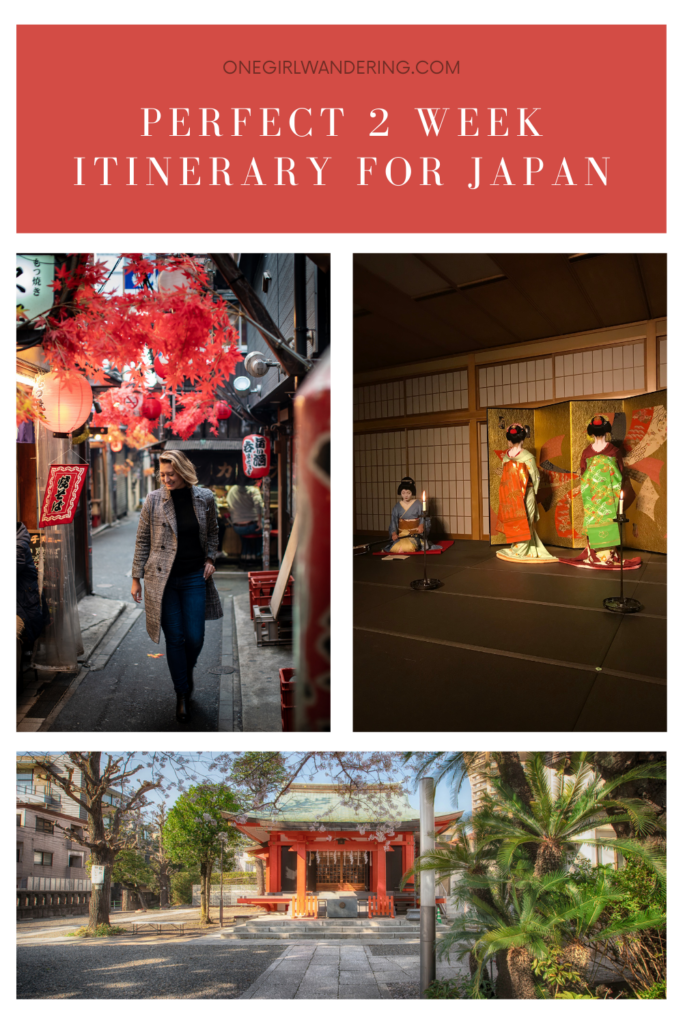
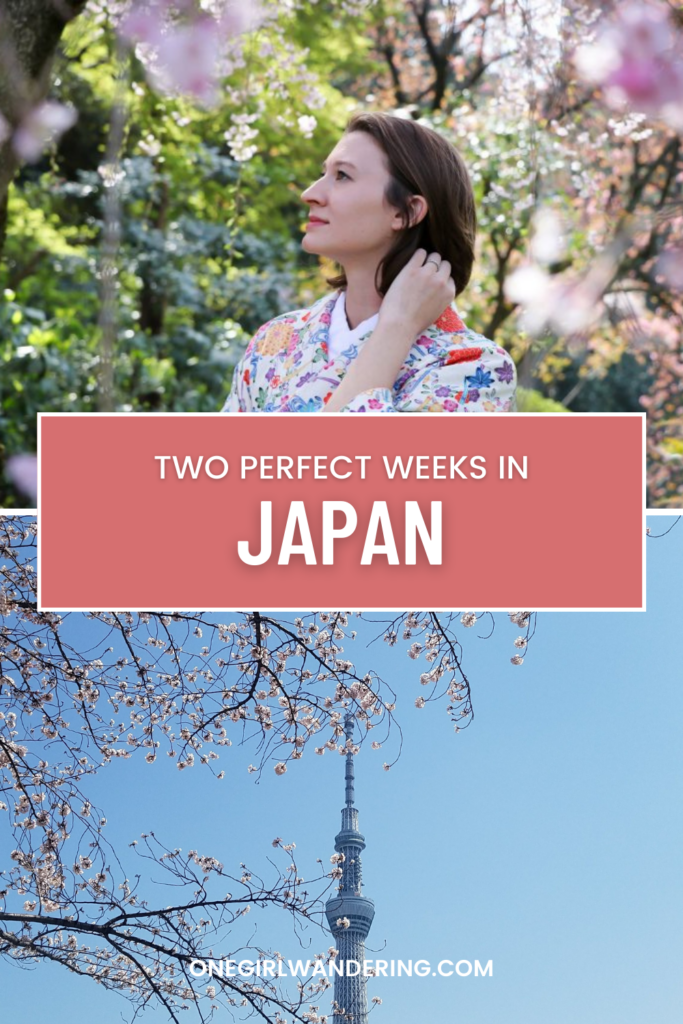
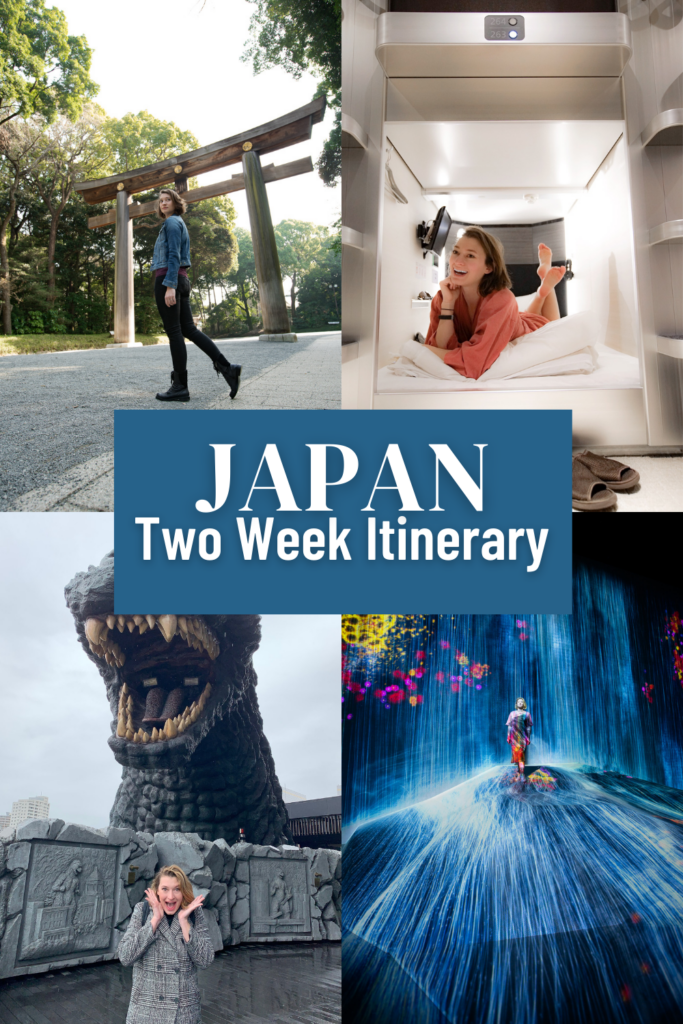
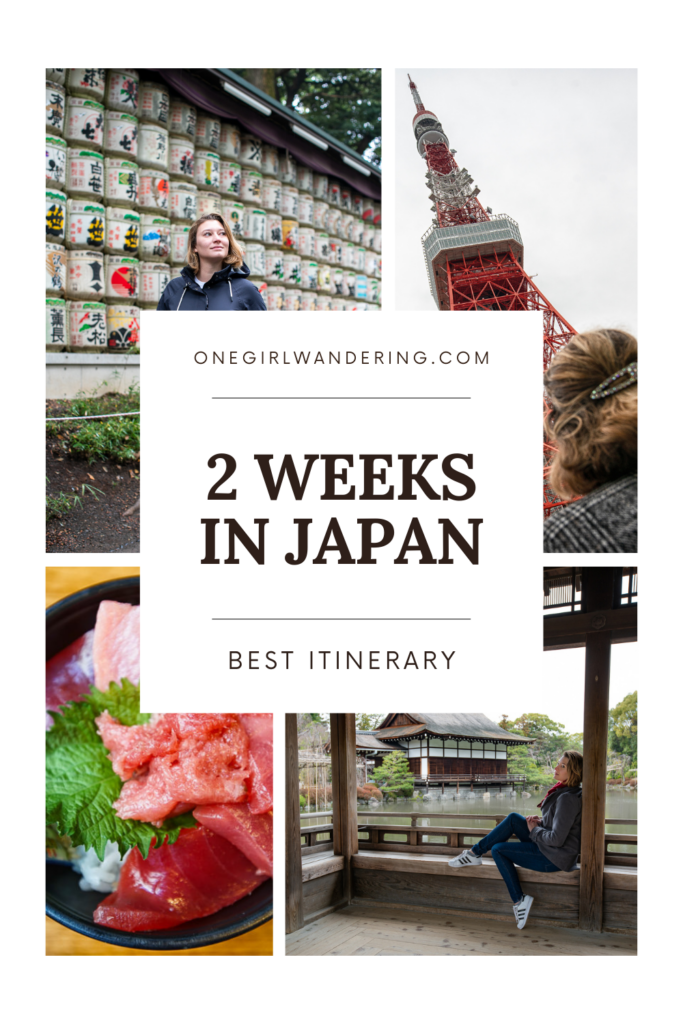










Previous Slide
Next Slide
FacebookTwitterGoogle PlusLinkedinPinterestEmail
Add ID to the Hide Specific Photos setting: